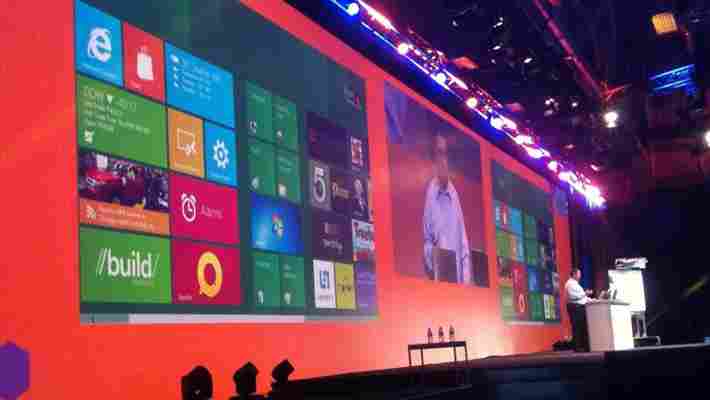Just like Microsoft can’t stop OEMs from bundling crapware on Windows PCs, Google can’t stop carriers from bundling crapware on Android devices. Yet today we’ve reached a new level of junk status for pre-installed software: T-Mobile and Lookout have announced a partnership where Android devices sold by the carrier will include a new security app called Automatic App Security.

This year, it starts with the LG Optimus L9 and the Samsung Galaxy Tab 2 10.1. Next year, “most Android T-Mobile devices” will be graced with the security app for “securing smartphones and tablets right out of the box for free.” Here are the details:
For Lookout, it’s a big win as the security firm gets to push its software and its brand to millions of new customers, and advertise its premium app (which costs 2.99 per month plus taxes). For T-Mobile, it’s a big win as the carrier is likely getting paid a hefty sum for bundling the app. There’s only one loser, and that’s the consumer.
Don’t get me wrong; security is important, on Android as well as other platforms. I just don’t believe in bundling third-party security software. Users should be able to choose. Make no mistake about announcements like this one: this has nothing to do with the end-user, and everything to do with making money.
If T-Mobile cared about its customers, it would urge Google to improve security in Android. Just how Redmond offers Microsoft Security Essentials for Windows, Mountain View should do the same for Android. In fact, it is my belief that this is exactly what the search giant plans to do, possibly as soon as next week . T-Mobile and Lookout likely know about it and simply want to get their business deal announced first.
See also – Play store update and VirusTotal buy: Google may soon scan your Android apps for malware
Image credit: Kenn Kiser
Hardware roundup: Say hello to the latest Windows 8 and Windows Phone 8 devices
It’s been a wild morning on the hardware front. If you are a bit confused, don’t fret, as TNW has prepared this short roundup to get you up to speed. For backstory on why tablets are a key component of the Windows 8 hardware ecosystem, head here . For an overview of Windows Phone 8, this post is your friend .

Now, let’s get into it, starting with Samsung.
Samsung will sell two different tablet hybrid machines, the Series 5 and the Series 7. Both snap easily into a keyboard, making them appear and function like a laptop. Just like with the Surface, you can snag the tablet from the keyboard, and voilà, you are free to walk about cabin.
You can get a keyboard-free Series 5 for $649. The keyboard will set you back another $100. Note: the Series 5 and Series 7 are Windows 8 machines, not Windows RT devices. That means that they are the more expensive variety of Windows-based tablets that will be coming out later this year.
The Series 7 has a higher screen resolution, and more memory. It tips the scales past the $1,000 mark. It’s s safe bet that the Series 7 will be more aimed at business customers than consumers.
Here are the ofWindowficial shots of the Series 5:
Samsung, not content with just Windows 8 devices, has a Windows RT tablet coming out as well. The Ativ Tab runs a 1.5 gigahertz, dual core processor. According to CNet , it’s size falls in between ” Galaxy Tab 10.1 and its sequel, the Galaxy Tab 2 10.1.”
You can snag a Galaxy Tab 2 for under $300, which you can use a pricing indicator for the Ativ Tab. Of course, you have to bake in the price of Windows itself, but all told the Ativ Tab should be far cheaper than the Series 5 line. Here it is:
Asus is not sitting by to let Samsung snag all the press clippings. It has two tablets on the way as well, one sporting Windows 8 and the other Windows RT.
Briefly, the Vivo Tab has an 11.6″ display, an Intel Atom processor, 2 gigabytes of RAM and 64 gigabytes of internal storage. It weighs 1.5 pounds, and is one-third of an inch thick. The Vivo Tab RT weighs 0.4 pounds less, and has a 10.1″ screen. Instead of an Intel chip, the Vivo Tab RT will run on a Tegra 3 processor, as does the Google Nexus 7. The Windows RT tablet will contain the same amount of RAM, but half the storage capacity.
Both will contain near field communication (NFC) capabilities. Prices are not known at this time, annoyingly. Fun fact: in the attachable keyboard, a second battery is present.
Finally, the very first official Windows Phone 8 handset was outed today. The ATIV S from Samsung is, according to Microsoft, “first of many amazing Windows Phone 8 devices coming this year.”
Here are the specs: 8.7 millimeters thick; 4.8″ screen; 1.5 gigahertz dual-core processor; 1 gigabyte of RAM; 16 or 32 gigabytes of internet storage; 8 megapixel main camera, and a 1.9 megapixel camera on the front. A very nice package, all told. Pricing and availability information? Nope.
Read those specifications again, and then read the stats on the Windows RT devices above. See the point? Here’s the phone, courtesy of Microsoft :
There is going to be much, much more hardware coming out for both Windows 8 and Windows Phone 8 in the coming months. So far, so good, TNW thinks. The devices listed above look solid, and provided that they can hit their required price points (as determined by the market landscape), each could find success.
More as it comes.
Top Image Credit: Michael Coté
Changers Marketplace lets you earn rewards for charging your gadgets with its eco-friendly solar panel
What if you could earn rewards for charging your gadgets via your own ‘green’ energy source instead via mains electricity? A new online marketplace from Changers allows you to do just that.

We first covered Berlin’s Changers when it launched its USB-equipped solar panel last year, allowing owners to store up energy to charge smartphones and other gadgets. That was only half of the startup’s vision though. As an extra nudge towards doing the right thing and using renewable energy, the Changers Marketplace has opened today.
As you store up energy in your Changers solar panel, you earn credits for each gram of saved CO2, which you can then redeem against a diverse range of products and services, including babysitting, car hire and clothing.
Although it’s a worldwide launch, most of the offers available right now are focused on European markets. Still, it’s an innovative idea, rounding out a product that has had its fair share of challenges since it first emerged at the end of 2011. Changers had to declare insolvency only few weeks after launch due to an investor getting into financial troubles. In March 2012, the founders bought back the company assets and got going again.
Changers says that since December 2011, users have produced over 126,864 watt hours of solar energy and with thus have saved 63,432 grams of CO2, equal to 15,858 smartphone charges.
➤ Changers
Header image credit: AFP / Getty Images
